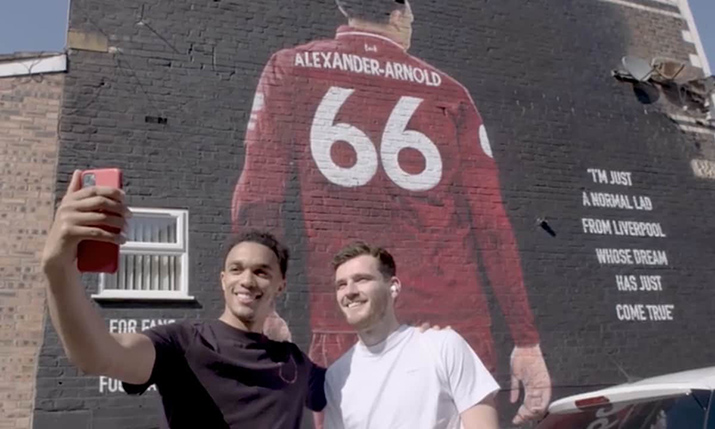Five more sports media industry predictions for 2021

Remote production, D2C and social video are all in the mix as Grabyo’s Scott Lunn puts forward five predictions for how the next 12 months are going to pan out.
5G becomes more than an advertising slogan
The low latency and high bandwidth promise of 5G has been a discussion point for the broadcast industry since the technology was launched in 2018.
For sports productions, 5G has the potential to remove the need for on-site production hardware or fibre, untethering camera operators and production teams, bringing a new level of flexibility and agility to remote and cloud production.
A few years ago, it would have been inconceivable that a sporting event could be shot and produced over a mobile network, but this is the new reality.
As 5G is rolled out across the globe, we know the likes of BT Sport and the BBC have committed to leveraging the technology to reduce costs and foster more creativity, as seen in the recent IBC Accelerator Project from 2020 supported by EE and Vodafone.
It’s likely we’ll see some meaningful strides taken in 5G adoption this year.
Remote production takes the lead
This time last year, nobody was aware just how much the sports industry was about to change. As we look forward, it’s also a good time to reflect on how quickly and effectively the industry was able to adapt in 2020.
Although the shift to remote production was a baptism of fire, many began to thrive in the ‘new normal’. We’ve seen some truly engaging content as a result – such as the live broadcasts on social media that brought us into the homes of our sporting heroes.
This year we’re set to see production teams build on that success and integrate remote working into their ‘plan A’, remote capabilities are a key part of production services now.
The industry is beginning to fully realise the reliability and scalability of cloud-based production, with new technologies and services coming on stream all rapid upgrade cycles for services in the market.
The ability to bring in talent from anywhere in the world, on both sides of the camera, while experimenting with formats and being reactive to fan feedback, tees up an exciting year for sports, despite the ongoing challenges of empty stadiums and pressure on key revenue streams.
Social video continues to thrive
While it looks more hopeful that fans may be able to get back into stadiums at some point in 2021, there will be many staying at home for the foreseeable future.
This means the increased consumption of video on social, digital and mobile for sports fans of all ages.
Real-time video content, such as highlights, will always have its place in the social content mix. But fans expect constant innovation – new formats, different camera angles and the intimate access to athletes that is made possible on social platforms.
Liverpool FC recently introduced a new content segment called ‘Wingmen’ (pictured, above), with first-team players Trent Alexander-Arnold and Andy Robertson, which features the two full-backs answering fan questions and discussing their teammates whilst driving around the city.
This type of raw, behind-the-scenes content provides more context for fans and has been successful throughout the pandemic. Adding a new USP (such as two players driving around the city) keeps it fresh and attractive to fans – although they must thank James Corden for the format!
Sports broadcasters, clubs, leagues and federations will need to commit to creating more content, with fresh ideas if they want to continue to attract and grow their audience.
Digital drives the dollars
Recouping lost revenue from media rights, ticket sales and sponsor activations is a top priority for clubs and leagues across the sports industry.
We saw many great digital activations in 2020, from sponsored live social broadcasts to bespoke content segments. The uplift in the value and focus on digital as a vehicle for sponsorship and content monetisation was a clear trend through last year.
With most sports being played behind closed doors, many football clubs and broadcasters have taken to live social broadcasts to recreate the matchday experience online. These shows are highly interactive and feature guest speakers and live reactions from fans, which drives engagement and longer audience watch-time.
A win-win for publishers and sponsors, and the opportunity to create new video formats and assets that sponsors can own, in place of lost inventory from the traditional matchday experience.
Across other sports such as tennis, tournament organisers have taken to hosting quizzes on Instagram Stories. With over 500 million people using Instagram Stories every day, there are lots of eyeballs for sponsors to reach with effective collaborations.
We are likely to see much more of this in 2021 as digital consumption remains high and drives more value for sponsors.
D2C will continue to grow
Throughout the pandemic, fans have shown an appetite for exclusive, tailored content, and are willing to pay for it. The growth of direct to consumer (D2C) streaming services has focused on the new global services such as Disney+, Prime Video and DAZN, yet a number of new options for content monetisation have emerged which will grow through 2021.
Spanish football club FC Barcelona was the first to launch its Facebook Fan Subscriptions page at the end of 2019, and interest has continued to grow. The service costs under £2.50 a month for exclusive live and VOD content on the platform, and FC Barcelona provide content for fans that you cannot get elsewhere.
If clubs can add real value with their fan subscription service – which is delivering timely, engaging content to their channel, then fans will respond and the interest in this type of service is only going to increase in 2021.
Scott Lunn is head of content at Grabyo
